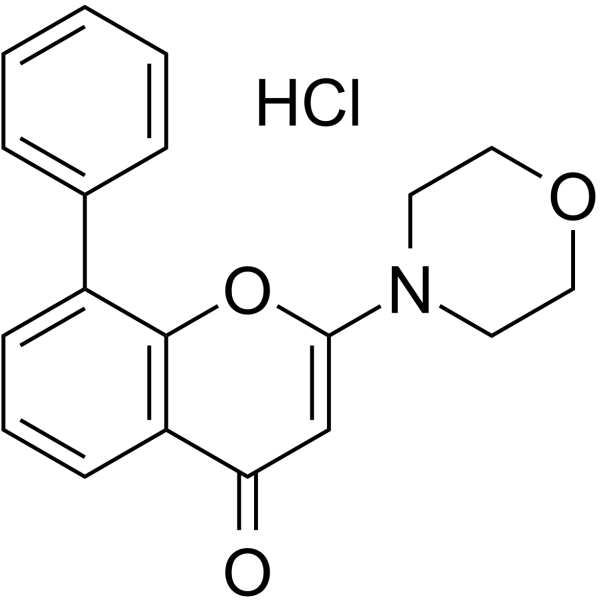Direct inhibition of the signaling functions of the mammalian target of rapamycin by the phosphoinositide 3-kinase inhibitors, wortmannin and LY294002.
G J Brunn, J Williams, C Sabers, G Wiederrecht, J C Lawrence, R T Abraham
Index: EMBO J. 15 , 5256-5267, (1996)
Full Text: HTML
Abstract
The immunosuppressant, rapamycin, inhibits cell growth by interfering with the function of a novel kinase, termed mammalian target of rapamycin (mTOR). The putative catalytic domain of mTOR is similar to those of mammalian and yeast phosphatidylinositol (PI) 3-kinases. This study demonstrates that mTOR is a component of a cytokine-triggered protein kinase cascade leading to the phosphorylation of the eukaryotic initiation factor-4E (eIF-4E) binding protein, PHAS-1, in activated T lymphocytes. This event promotes G1 phase progression by stimulating eIF-4E-dependent translation initiation. A mutant YAC-1 T lymphoma cell line, which was selected for resistance to the growth-inhibitory action of rapamycin, was correspondingly resistant to the suppressive effect of this drug on PHAS-1 phosphorylation. In contrast, the PI 3-kinase inhibitor, wortmannin, reduced the phosphorylation of PHAS-1 in both rapamycin-sensitive and -resistant T cells. At similar drug concentrations (0.1-1 microM), wortmannin irreversibly inhibited the serine-specific autokinase activity of mTOR. The autokinase activity of mTOR was also sensitive to the structurally distinct PI 3-kinase inhibitor, LY294002, at concentrations (1-30 microM) nearly identical to those required for inhibition of the lipid kinase activity of the mammalian p85-p110 heterodimer. These studies indicate that the signaling functions of mTOR, and potentially those of other high molecular weight PI 3-kinase homologs, are directly affected by cellular treatment with wortmannin or LY294002.
Related Compounds
| Structure | Name/CAS No. | Molecular Formula | Articles |
|---|---|---|---|
 |
LY-294,002 hydrochloride
CAS:934389-88-5 |
C19H18ClNO3 |
|
Alpha-lipoic acid activates eNOS through activation of PI3-k...
2015-01-01 [Vascul. Pharmacol. 64 , 28-35, (2015)] |
|
Neuritogenic Activity of Tetradecyl 2,3-Dihydroxybenzoate Is...
2015-08-01 [Mol. Pharmacol. 88 , 326-34, (2015)] |
|
Deficiency of Factor VII activating protease alters the outc...
2015-04-01 [Eur. J. Neurosci. 41(7) , 965-75, (2015)] |
|
Urocortin 2 stimulates nitric oxide production in ventricula...
2014-09-01 [Am. J. Physiol. Heart Circ. Physiol. 307(5) , H689-700, (2014)] |
|
Deciphering combinations of PI3K/AKT/mTOR pathway drugs augm...
2014-01-01 [PLoS ONE 9(8) , e105280, (2014)] |